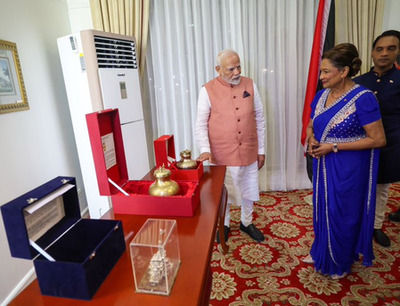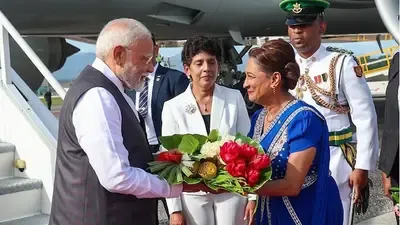 India's Green Hydrogen Vision
India's Green Hydrogen Vision
New Delhi, June 19: India has set an ambitious target to establish a production capacity of 5 million metric tonnes (MMT) of green hydrogen by the year 2030. A recent report emphasizes that achieving this goal hinges on generating substantial demand for green hydrogen, highlighting that export opportunities could create a demand of up to 1.1 MMT.
The joint report from Bain & Company, the Confederation of Indian Industry (CII), and the Rocky Mountain Institute (RMI) warns that without a corresponding increase in demand, this potential may not be fully realized.
The document outlines a strategic approach for India to foster large-scale demand for green hydrogen, stressing the need for targeted policy measures, careful selection of sectors, and alignment with export strategies to cultivate a strong domestic and international market.
The report suggests that integrating green hydrogen into existing industrial processes, such as oil refining, fertilizer manufacturing, and piped natural gas (PNG) distribution, could generate up to 3 MMT of demand by 2030.
On the international stage, exports of green hydrogen, ammonia, and green steel could contribute an additional 1.1 MMT, while public procurement of green steel for infrastructure projects could unlock 0.6 MMT of demand.
The report indicates that even minor blends of green hydrogen—10% in refining and 20% in fertilizers—can be implemented with minimal cost increases.
As production costs decrease, these blending ratios could be increased, facilitating higher demand without burdening end users.
Additionally, the report identifies opportunities in niche sectors such as chemicals, glass, and ceramics, where small-scale substitution with green hydrogen could yield an extra demand of up to 0.07 MMT by 2030.
A significant recommendation is for the government to leverage public procurement by mandating green steel usage in projects like bridges, housing, and railways, thereby establishing a stable long-term demand.
India's robust renewable energy capabilities and relatively low production costs position it well to meet global demand.
The report suggests that if India captures just 5-7.5% of the green hydrogen import requirements from countries like the EU and South Korea, it could create an additional demand of 0.8-1.1 MMT.
Exporting green steel, particularly to the EU under its new carbon tax regulations, could further add 0.13-0.18 MMT.
Industry leaders have praised the report's insights. Sumant Sinha, Chairman of the CII Energy Transition and Hydrogen Council, referred to it as a 'playbook' for actualizing India's green hydrogen ambitions.
Vineet Mittal, Co-chairman of the Council, emphasized the importance of long-term offtake agreements, affordable financing, and optimizing input costs to facilitate widespread adoption.
Sachin Kotak from Bain & Company noted that while the supply side is rapidly expanding, demand-side strategies such as blending, public procurement, and export initiatives are crucial for achieving the 2030 target.









